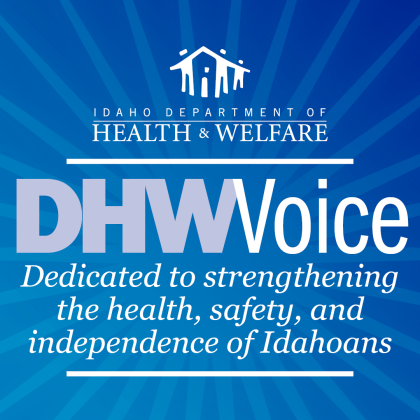Protect your health and avoid STIs
Sexually transmitted infections (STIs) are spread through sexual activity or intimate physical contact. They don’t always cause symptoms, or cause only mild symptoms, making it possible to have an infection without being aware. It’s important to know this because an untreated infection can cause severe health issues.
The most reliable way to avoid an STI is to not have sex. If you’re sexually active or thinking of becoming sexually active, you can take some simple steps to protect your health and the health of your partner.
STIs are preventable. They also can be treated with medication, and some can be cured. If you have sex, know how to protect yourself and your sexual partner from STIs. Regular testing is crucial. For STI testing and free services in your area, check out www.findidahotesting.com.
April is STI Awareness Month, and the second full week in April is STI Awareness Week. Both are opportunities to talk about STIs, get tested for STIs, and, if need be, get treatment.
TALK: Talk openly and honestly with your partner(s) and your healthcare provider about sexual health and STIs.
Starting a conversation about sexual health with your partner can be hard, but it’s needed to help keep you both safe. You can start your conversation with your partner by saying:
- “Let’s talk about our sexual health openly and honestly. It’s important for both of us to feel safe and cared for.”
- “I value our relationship and want to make informed decisions about our sexual health together.”
During the discussion, talk about your STI testing history and suggest getting tested together. Share any known STI status and consider only having sex with only each other and/or agree to use condoms each time you have sex.
Talk with your healthcare provider about your sex life as it relates to your health. This helps your healthcare provider understand what STI tests you should be getting and how often.
Here are a few questions you should expect and be prepared to answer honestly:
- Have you been sexually active in the last year?
- In the past 12 months, how many sexual partners have you had?
- What are you doing to protect yourself from STIs?
Don’t assume that routine medical checkups include STI testing. Ask about testing if it’s not discussed. Also ask about vaccines for STIs like hepatitis B or HPV, they might be right for you.
TEST: Get tested. It’s the only way to know for sure if you have an STI.
Many STIs don’t cause symptoms, so testing is the only way to know for sure if you have one. If you’re having sex, getting tested is one of the most important things you can do to protect your health.
Find testing and free services near you at www.findidahotesting.com. Options may include virtual appointments, urgent care walk-ins, or at-home sample collection.
If you’re not comfortable talking with your regular healthcare provider about STIs, find a clinic or local public health district that provides free or low-cost confidential testing.
TREAT: If you test positive for an STI, work with your healthcare provider to get the correct treatment.
Some STIs can be cured with the right medicine, and all STIs are treatable. Make sure your treatment works by following these guidelines:
- Take all the medication your healthcare provider prescribes, even if your symptoms go away.
Don’t share your medication with others. - Abstain from sexual activity until you and your partner(s) have completed the prescribed treatment.
- Get a follow-up STI test, if needed, to make sure the treatment worked.
- Consult with your healthcare provider to determine the most suitable medications for your condition.
Learn more:
- From DHW: About sexually transmitted diseases: https://healthandwelfare.idaho.gov/health-wellness/diseases-conditions/sexually-transmitted-disease
- From Centers for Disease Control and Prevention: https://www.cdc.gov/std/
Kimberly Matulonis-Edgar is the Prevention Programs coordinator of the HIV, STD, and Hepatitis Section in the Division of Public Health. Kimberly has worked for the department since 2015 and focuses on educating the public about sexually transmitted infections.
The Idaho Department of Health and Welfare is dedicated to strengthening the health, safety, and independence of Idahoans. Learn more at healthandwelfare.idaho.gov.


Join the Discussion
Please note the following terms of participation in commenting on the DHW Voice blog.
To ensure a productive discussion you agree to post only comments directly related to this post and to refrain from posting obscenities; threatening, abusive or discriminatory language; sexually explicit material; and other material that would violate the law if published here; promotional content; or private information such as phone numbers or addresses. DHW reserves the right to screen and remove inappropriate comments.